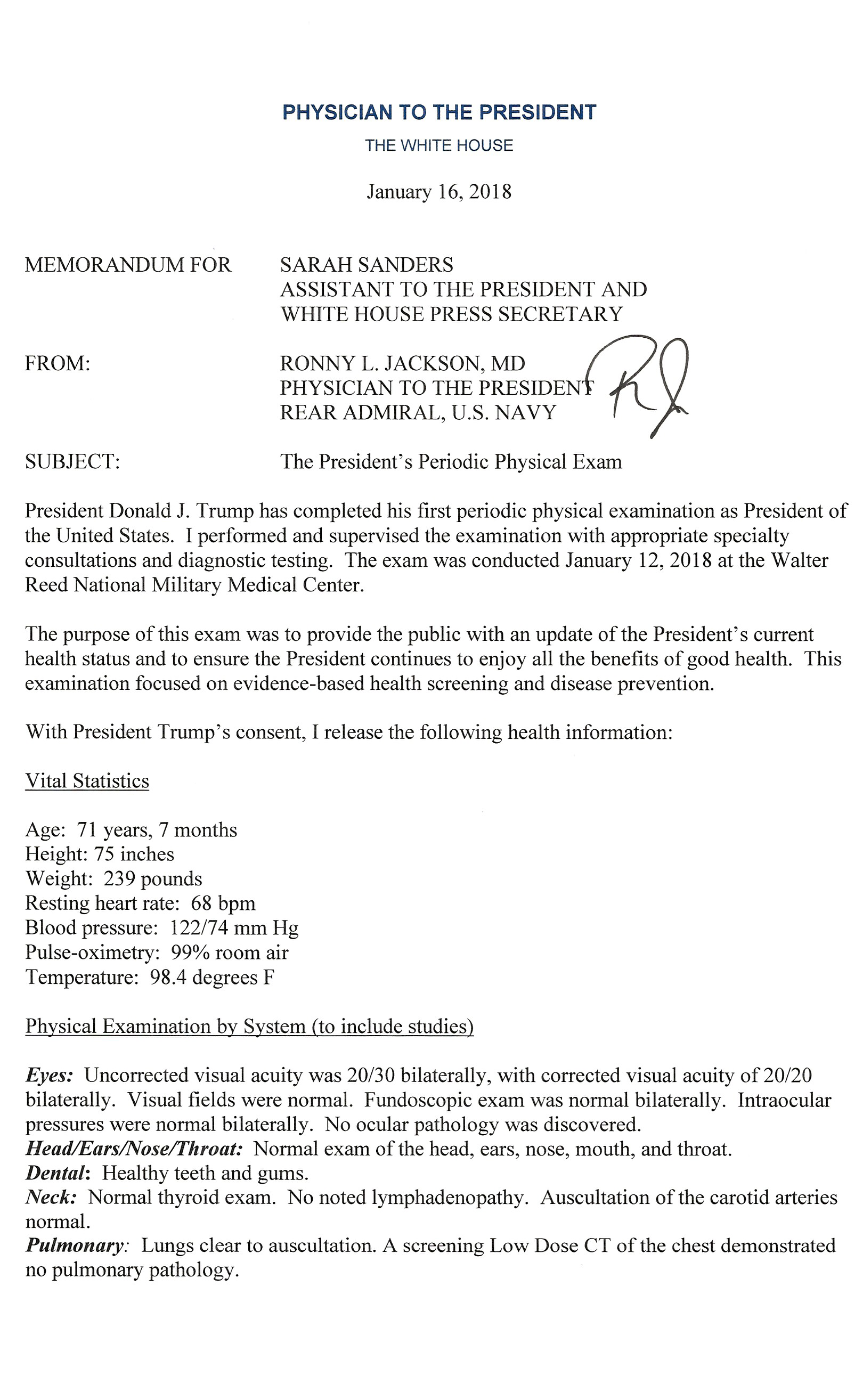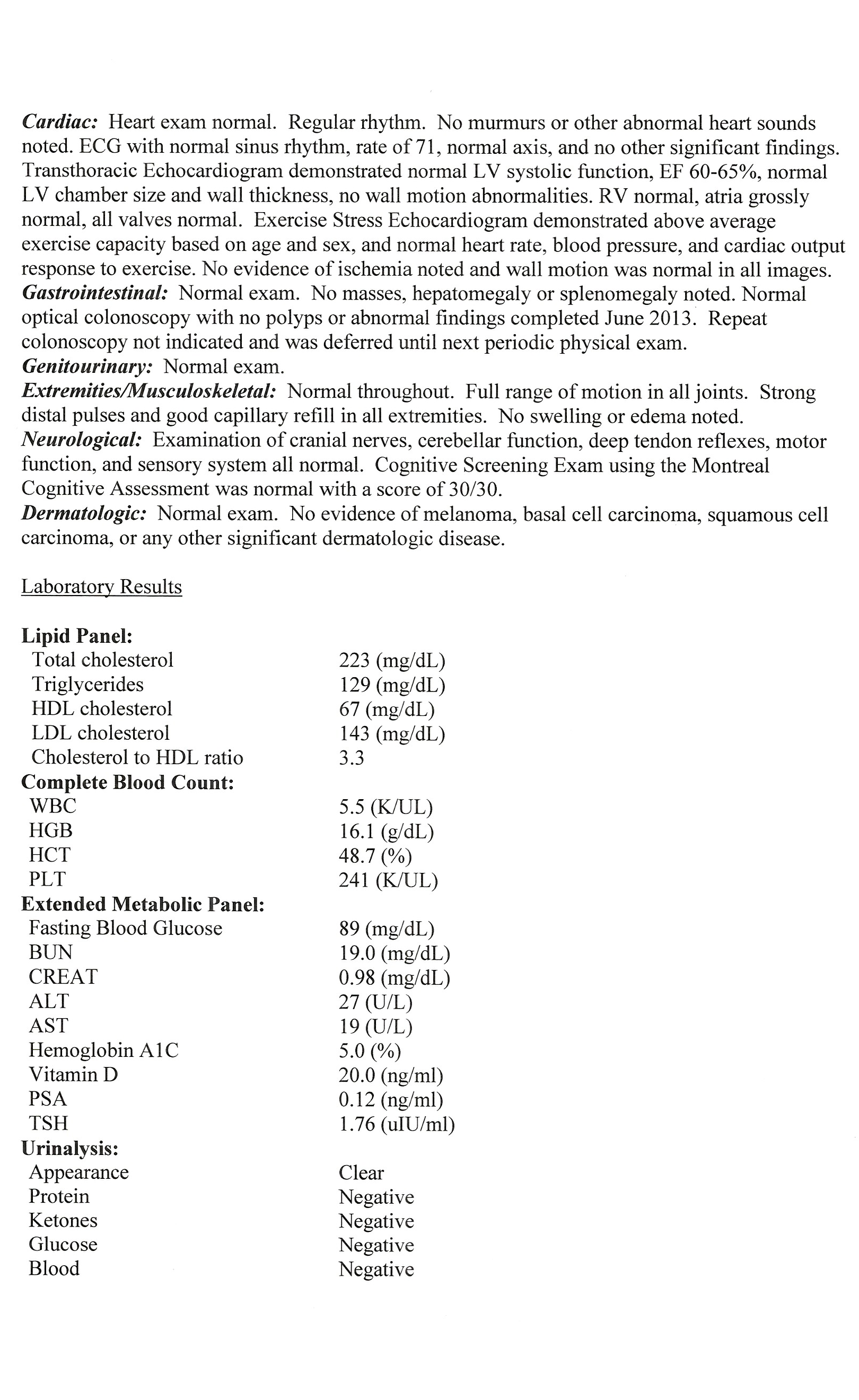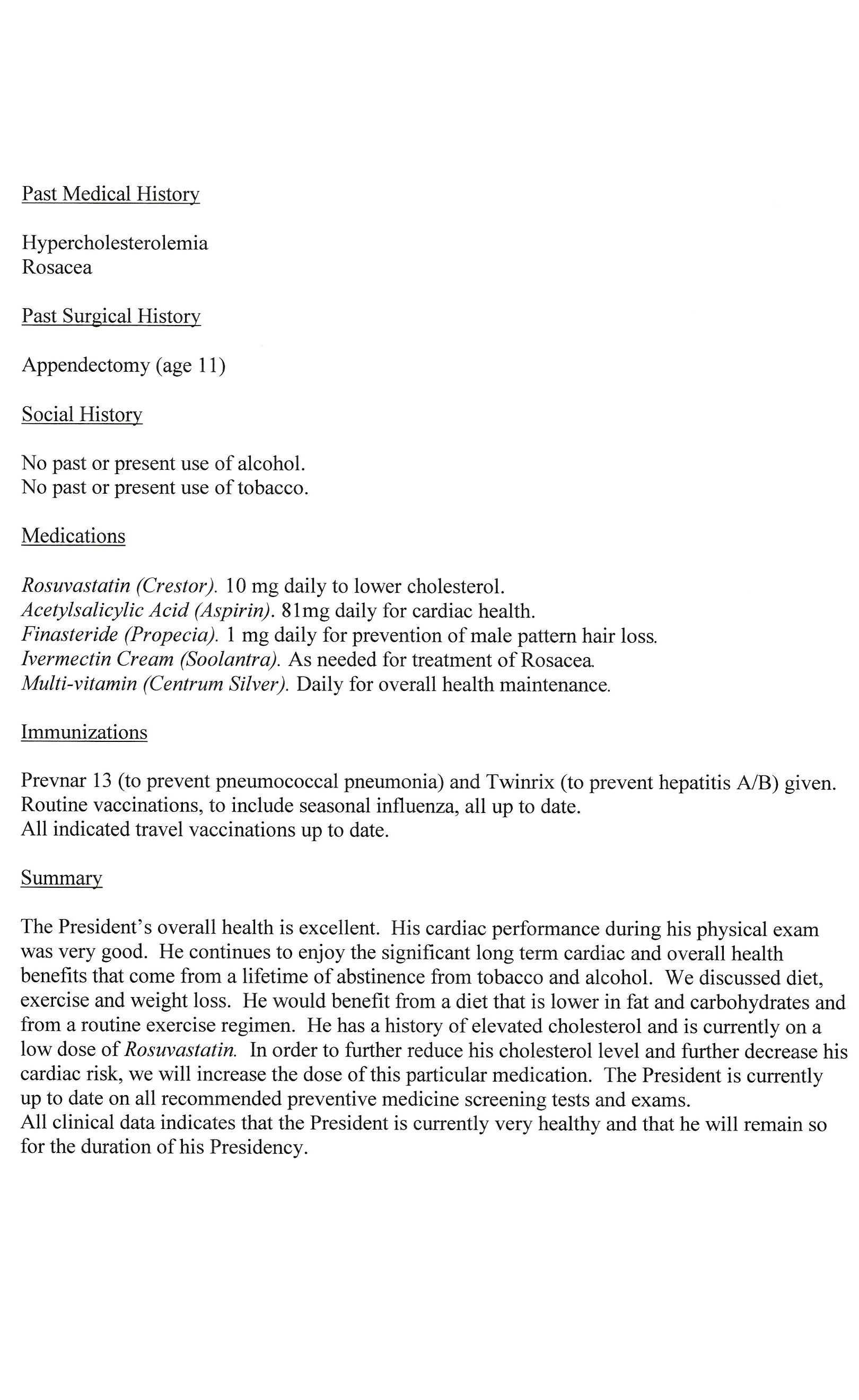

⬅ Donald Trump: 2018 Physical Examination
As a candidate, Trump issued three statements about his medical health:
- 2015: (December) MORE 3 (Physician statement #1)
- 2016: (September) MORE 2 (Physician statement #2)
- 2016: (September) MORE 1 (Interviews: Dr. Oz, Fox)
- 2017: (January) Takes office.
- 2018: (January) SEE BELOW 4 Press briefing: MORE 5
- 2019: (February) MORE 6
- 2019: (November) MORE 7 sham exam part 1
- 2020: (June) MORE 8 sham exam part 2
Comment: Incredibly, these physical examinations, which one would expect to be routine, staid affairs, took on circus-like characteristics:
- The 2015 report had ridiculous, unprofessional hyperbole that made Trump's physician a national laughingstock. It later emerged that Trump wrote this report himself.
- The 2018 report was delivered during a press conference in which the President's physician made good-humored and properly caveated remarks that commentators unfairly inflated to ridiculousness.
- The first 2019 report, though more subdued (and, sadly, far less complete), still contained unsupportable prognostications from the new presidential physician.
- The second 2019 report, for Trump's "interim checkup" -- if that's what it really was -- is a shambles. Subtexts of the nonsensical statements from the White House and the President's physician strongly suggest it was not a routine examination at all, but a hurried, abrupt consultation at Walter Reed for undisclosed medical reasons.
- The 2020 report was no report at all, except for confirming with painful clarity the degree to which the White House physician is a patsy of his President. Worse, with a presidential election occurring less than five months later, the results of this physical examination will be the only recent medical data available to the electorate when they vote.
Hence, four times in three years confidence in the office of the President's physician was undermined -- a low ebb in its history. Even if one credulously believes that the President's medical team has been completely and honestly forthcoming, all this sturm und drang is itself dangerous, as it can easily detract from substantive medical issues -- as it already seems to have done with Trump's sleep.
This is the publicly-released report of President Trump's physical examination of January 12, 2018.
Comment:



- Cillizza, Chris; Blake, Aaron. Donald Trump's interview with Dr. Oz was just as amazingly strange as we thought it would be. (Published 15 September, 2016. Downloaded on 2019-12-01.) Available on the web: https://www.washingtonpost.com/news/the-fix/wp/2016/09/15/donald-trumps-visit-with-dr-oz-was-just-as-amazing-as-you-though-it-would-be/
Comment: Also includes annotations by Cillizza and Blake. Their interview transcript is archived here: MORE
- Bornstein, Harold N. [Public Letter]. (Published 13 Sept. 2016. Downloaded on 2019-11-30.) Available on the web: https://assets.donaldjtrump.com/DJT_Medical_Records_.pdf
Comment: Dr. Bornstein became Trump's physician in 1980. Bornstein's letter is linked to by Frizell (op cit) and is archived here --> MORE
- Bump, Philip. Donald Trump's doctor came down with a case of Trumpitis. (Published 26 Aug. 2016 (revision of original Dec. 2015 story). Downloaded on 2019-11-25.) Available on the web: https://www.washingtonpost.com/news/the-fix/wp/2015/12/14/donald-trumps-doctor-has-come-down-with-a-case-of-trumpitis/
Comment: This articles relates to the first of Dr. Bornstein's letters, reprinted here --> MORE
- Jackson, Ronny L. (M.D.). The President's Periodic Physical Exam. (Published January 16, 2018. Downloaded on 2019-11-21.) Available on the web: https://www.whitehouse.gov/wp-content/uploads/2018/01/Summary-of-Physical-Exam-for-President-Trump-12-Jan-2018.pdf
Comment: The document is archived here --> MORE. Also highly informative is the press briefing where the report was delivered: MORE.
- Sanders, Sarah; Jackson Ronny. Press Briefing by Press Secretary Sarah Sanders and Dr. Ronny Jackson. (Published 16 Jan. 2018. Downloaded on 2019-12-28.) Available on the web: https://www.whitehouse.gov/briefings-statements/press-briefing-by-press-secretary-sarah-sanders-and-dr-ronny-jackson-01162018/
Comment: A transcript of the press briefing is archived here --> MORE
- Conley, Sean (D.O.). The President's Second Periodic Physical Exam. (Published February 14, 2019. Downloaded on 2019-11-25.) Available on the web: https://www.whitehouse.gov/briefings-statements/memorandum-physician-president-2/
Comment: The document is archived here --> MORE
- Conley, Sean (D.O.). Interim Check Up. (Published November 18, 2019. Downloaded on 2019-11-21.) Available on the web: https://stjosephpost.com/posts/5dd3f3c7897d147ad4bb10f8
Comment: The document is archived here --> MORE
- Conley, Sean (D.O.). President Donald J. Trump's Periodic Physical Exam. (Published June 3, 2020. Downloaded on 2020-06-10.) Available on the web: https://media.arkansasonline.com/news/documents/2020/06/03/Trump_Physical_Exam.pdf
Comment: The document is unacceptably vague about dates. For example, it is not possible to determine on what date between Nov. 2019 and April 2020 the President's weight was measured. The document is archived here --> MORE
- Johnson, Jenna; Bernstein, Lenny. Trump's first official physical exam could provide new clues about his health. Washington Post. January 12, 2018. Available on the web at: https://www.washingtonpost.com/politics/trumps-first-official-physical-exam-could-provide-new-clues-about-his-health/2018/01/11/81924536-f640-11e7-beb6-c8d48830c54d_story.html
There are, however, multiple identifiable instances where the truth has been stretched, omitted, or garbled:
- The President's height was exaggerated.
- The "stamina" discussion (in the press briefing) omits Trump's admitted exhaustion in May 2017.
- The abdominal exam was described as "normal" but of course the exam was abnormal for obesity.
- Only one visual acuity reading is provided, and it is not stated whether it is
for near-vision or distance-vision. Presumably it is distance-vision and the much
worse near-vision acuity was deliberately suppressed.
- Coronary calcium scores were omitted from the report but disclosed in
response to a press question. The physician stumblingly appeared to say that he
thought the scores were not significant, but of course they are.
While minor in themselves, these issues are a reminder that, without defined standards for the Presidential medical examination, the public will never truly know the President's state because it is just so simple to tailor the message as desired, by omitting information. Here we see a clear bias toward suppressing data showing even a hint of abnormality.The other major fault is the lack of formal sleep assessment -- a pretty large lacuna.